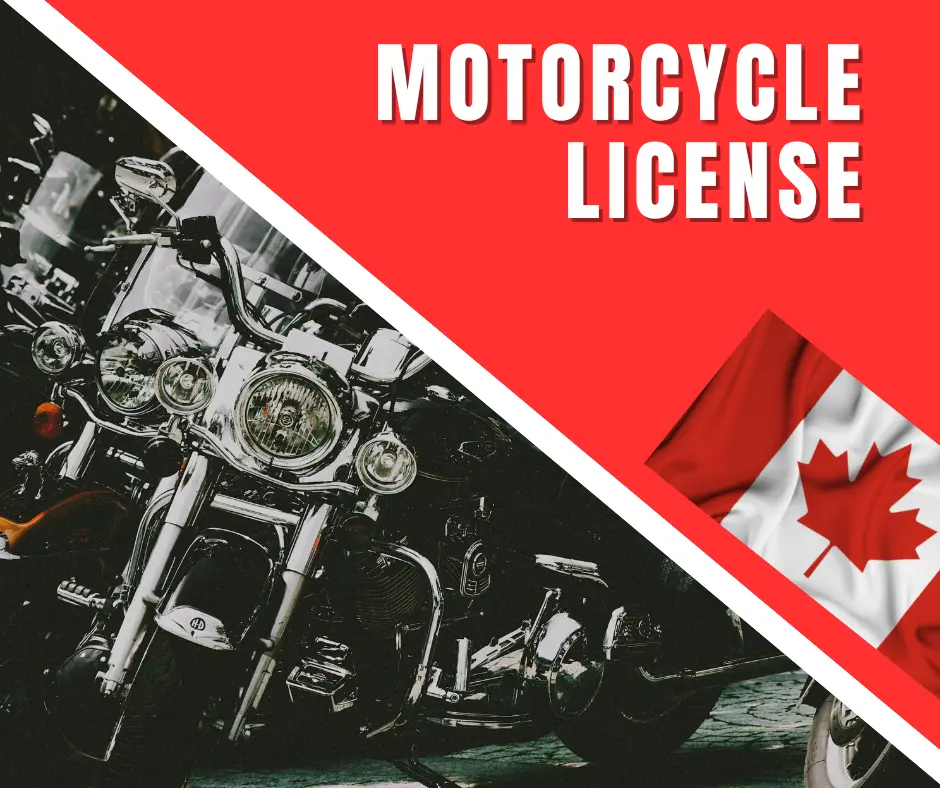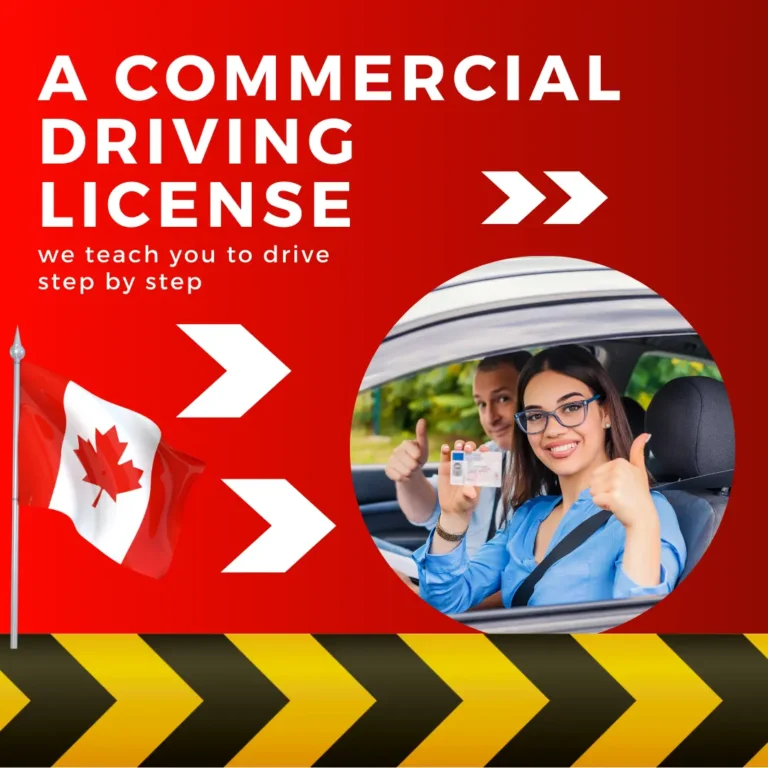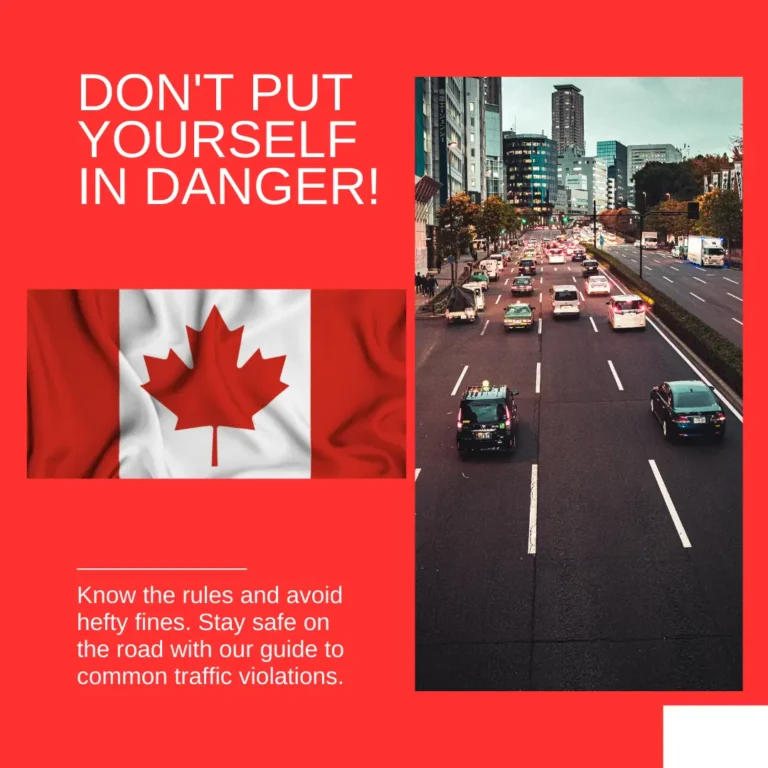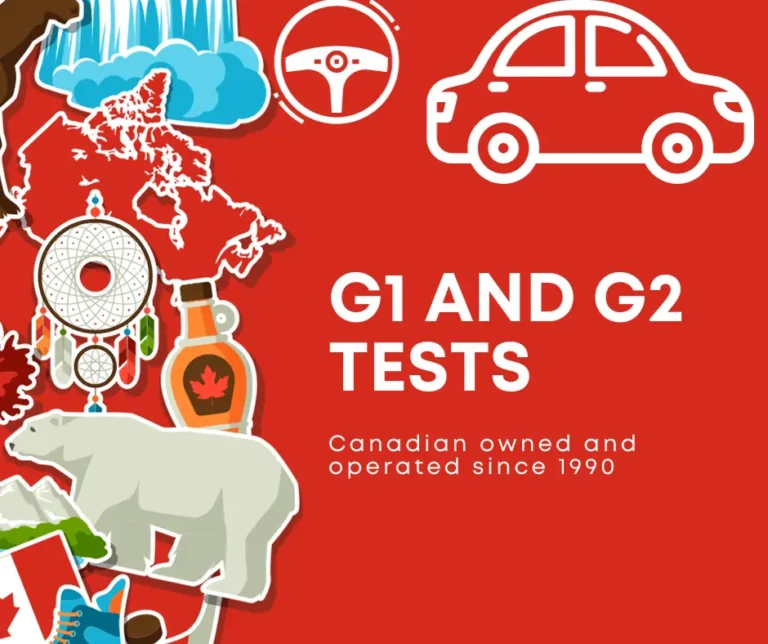How do I pass the motorcycle driving test in Canada?
The motorcycle driving test and license are a bit of a hassle in Canada. Unless individuals recognize expectations and how to organize naturally, that is certainly where this resource comes in handy.
Tips to pass the Canadian Motorcycle Driving Test
To pass the Canadian motorcycle driving test, you will need both practical riding abilities and a thorough understanding of traffic regulations. It’s important to verify the latest information from the licensing authority of your province or territory. Listed below are a few tips to help prepare you for the test and ensure that it is passed:
Motorcycle learner’s permit:
Before you take your full motorcycle driving test, in some provinces, you will need to have a learner’s motorcycle permit.
A learner’s license is a temporary driving permit that lets individuals practice under specific conditions. For this permit, motorcyclists must pass a written test covering essential knowledge such as motorcycle regulations, road rules and safety. This permit is often restricted, requiring that you ride with supervision. It also serves as a pre-requisite for the motorcycle driving test.
In many provinces, motorcycle courses are offered that improve riding abilities and prepare for the written exam. Learner’s permits are an important step on the road to a motorcycle license. They allow riders to build up their knowledge and skills in a safe and controlled environment. For accurate information and the most recent guidelines on how to obtain a motorcycle permit, it’s best to check with the licensing authorities in your state or locality.
Take a Motorcycle Instruction Course:
You might want to consider taking a course in motorcycle riding. Many of these courses combine both practical and classroom riding instruction. A recognized course of training can improve your skills. It may even offer you benefits like exemptions for certain parts of the exam.
These courses are often provided by accredited training organizations and combine both classroom education and real-world riding experiences. These courses provide participants with an understanding of traffic laws and safety riding procedures, along with the ability to manage various riding scenarios. Some courses offer exemptions, for example, from certain sections of the driving test. The courses will help you during your motorcycle driving test.
To find out more about available training, course schedules, or any special requirements, prospective riders should contact their local licensing authorities or providers of local training. It is important to take a motorcycle instruction course to improve riding techniques and also increase your confidence on the roads.
Practice riding: Motorcycle Driving Test
Spend time honing your skills under a range of riding conditions. To build control and confidence, practice maneuvers like turning, stopping, or weaving. Canada has a long tradition of motorcycle practice. It’s a great way to develop skills, confidence, and the ability to ride safely and effectively. It encourages riders to ride in various conditions, such as rural or urban.
Be sure to master basic maneuvers, including turning, stopping, weaving, etc. Practice in quiet areas or parking lots before progressing onto more challenging streets. For better control, deliberate and consistent practice is the key. Also, enroll in a motorcycle instruction course if you want structured guidance and instruction. Always follow the traffic rules and safety regulations during practice.
Understand traffic rules:
You should familiarize yourself with the specific rules that govern motorcycles. Be familiar with all the rules and regulations that apply to motorcycles, including traffic signals, right of way, signs, etc.
Motorcyclists must understand traffic laws in Canada to be safe and ensure the safety of other road users. Traffic regulations help prevent accidents and reduce the likelihood of collisions. They also promote a better flow of traffic. To navigate intersections and roads safely, it is essential to be familiar with the right-of-way rules, follow traffic signals, and conform to speed limits. Motorcyclists who are aware of and follow traffic laws can better predict potential road hazards and react accordingly, improving overall safety.
Take the pre-motorcycle driving test:
You can use the pre-motorcycle driving test in some programs to gauge your ability for the motorcycle test. You can use such evaluations as a way to pinpoint areas for improvement.
Overview of the Motorcycle Handbook:
The Motorcycle Handbook is a comprehensive guide that provides essential information for individuals preparing for the motorcycle driving test in Canada. It covers fundamental topics such as traffic rules, safe riding practices, and motorcycle-specific regulations. The handbook is a valuable resource for understanding road signs, right-of-way rules, and various riding scenarios.
It serves as a foundation for the written portion of the test, offering key insights into the knowledge required to ride a motorcycle safely and responsibly. Prospective riders are strongly advised to review the Motorcycle Handbook thoroughly, as it forms the basis for the theoretical understanding needed to pass the motorcycle test and ensure safe motorcycle operation on Canadian roads
It is important to read the handbook that comes with the motorcycle license. This handbook includes information on safe riding techniques, road rules, and essential test knowledge.
Prepare for the Practical Exam:
The practical exam will typically require you to demonstrate your control of the motorcycle and ability to perform maneuvers. You must also be able to ride in traffic safely. These skills can be practiced in a controlled, safe environment.
Focus more on learning essential riding techniques, practicing under different conditions, and understanding specific skills assessed in the exam to prepare for your practical motorcycle license exam. To build confidence, take a motorcycle instruction course. It will provide structured training. The course also reviews traffic rules and allows you to simulate real-world test conditions. Maintain your bike in good working order, and be calm, focused, and prepared on the day of your exam. Dress appropriately and with appropriate safety gear. You will be more prepared for your practical motorcycle driving test if you practice and prepare thoroughly.

Understand the test routes:
Know the common routes used to test motorcycle drivers in your locality. You can prepare for the test by familiarizing yourself in advance with your local routes.
For optimal preparation, it is crucial to familiarize yourself with test routes in Canada for motorcycle licensing exams. By knowing your routes, you can prepare for challenges and practice maneuvers that are relevant. By familiarizing yourself with the common routes, you can better prepare for the practical test. This proactive strategy ensures you are well-prepared for specific challenges during the practical exam. Ask your local licensing agency or trainers for details on the typical motorcycle test route and use this knowledge to prepare for the exam.
Focus and stay calm
Keep calm and focused on the day of your test. You should follow the instructions of the examiner and use the skills and knowledge that you’ve gained through training and practice.
For both your safety and the effectiveness of your riding, it is vital to remain engrossed. Bikers can stay alert to the road, avoid potential dangers, and adjust quickly when conditions change by maintaining focus. In difficult situations, a calm mind helps the rider make rational decisions. The motorcycle is more controlled and the chances of an accident are reduced. Bikers who ride with calmness will also have a better experience and they will eventually do well in their test. They can appreciate their trip and be more responsive to sudden events. To summarize, it is important to remain calm, focused, and in control while cycling. This will ensure safety and provide a good riding experience.
If applicable, pass the written test:
Some provinces require you to also pass a practical and written test. To prepare for this written part, review the materials in the manual for your motorcycle.
Have a positive attitude
A positive approach to the test is essential. You can achieve success by being confident in your abilities and maintaining a calm attitude.
Maintaining a positive attitude while motorbiking in Canada is crucial for both safety and enjoyment. Focus on the thrill of riding and embrace a proactive mindset. Remind yourself of your training and skills, stay confident, and approach challenges with a solution-oriented perspective. Appreciate the freedom and exhilaration of riding, and avoid letting external factors impact your mood. Stay alert, enjoy the journey, and view each ride as an opportunity for growth and improvement. A positive attitude contributes to a safer and more enjoyable motorbike experience on the road.
Be sure to contact your provincial or territorial licensing authority regarding specific information and requirements. Also, you may want to seek advice from riders and instructors with experience who can provide useful insights and tips.
How difficult is it to get a motorcycle license in Canada?
In Canada, obtaining a motorcycle licence involves both a theoretical and practical test. The level of difficulty can be affected by the preparation and experience you have with motorcycles, as well as your adherence to all safety regulations. To improve skills and build confidence, it is recommended that you attend a motorcycle instructor course. The process is not without its challenges but thorough preparation, familiarity with traffic rules and commitment to the cause can increase your chances of success. With the proper commitment and training, the process of obtaining a motorcycle licence in Canada can be managed.
Where is the easiest place to get a motorcycle license in Canada?
The requirements and process for obtaining a motorcycle license are generally the same across Canada. It’s the individual factors that can make it more difficult or easier. Every jurisdiction has its own licensing procedure, but in general, the standard is to promote safe riding.
Note that the ease of obtaining a motorcycle license can be subjective, depending on factors like an individual’s riding experience and training. Take a motorcycle instruction program to gain the skills and knowledge you need, regardless of your jurisdiction.
It is best to contact the local licensing agency or transport department in order to find out about specific requirements or processes. You can get accurate information and the most recent requirements on how to obtain a license.
Can foreigners learn to drive in Canada?
In Canada, foreigners can learn to drive. However, the procedure varies from province to province. A newcomer may be required to study the road rules in their area, check their eligibility, and obtain a permit. This permit allows people to learn how to drive, but with restrictions. The written knowledge test and the road test are required after you have gained enough experience. The full license is awarded after completing all three stages. Foreigners must familiarize themselves fully with all the procedures and requirements set out by their local licensing authority. So they are able to navigate safely and within their jurisdiction’s regulations.







